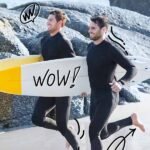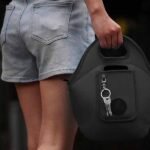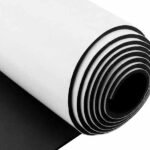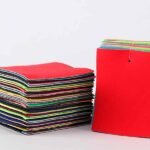Neoprene tote bags have surged in popularity over the past decade, and 2025 marks the year they truly go mainstream. Lightweight yet sturdy, water‑resistant yet breathable, these versatile carriers combine style and function for everything from beach days to brand promotions. But with so many fabrications, thicknesses, and finishing options on the market, how do you pinpoint the very best neoprene tote bag to meet your needs?
The best neoprene tote bags in 2025 balance premium SBR‑ or CR‑based materials (2–4 mm thickness) with reinforced stitching, custom printing options, and eco‑friendly backings. Look for tear‑resistant seams, UV‑stable colors, and MOQ‑friendly sourcing from a trusted manufacturer like Szoneier.
Imagine launching your new summer collection with custom‑printed neoprene totes that endure sun, salt, and surf—then watch as influencers share them online, boosting your brand overnight. In this article, we’ll break down the must‑have features, materials, and customization strategies for neoprene tote bags in 2025, and explain why Szoneier, with over 18 years’ R&D and manufacturing expertise, is your go‑to partner for rapid sampling, low MOQ, and flawless private‑label or OEM/ODM deliveries.
What Features Define the Best Neoprene Tote Bag in 2025?

The standout neoprene tote bags in 2025 feature 2–4 mm premium neoprene (SBR or CR), double‑stitched seams, laminated polyester backing, and sublimation or silicone printing. Reinforced handles, water‑sealed zippers, and edge‑bonded hems ensure durability, while eco‑friendly materials and low minimums (as low as 50 pcs) satisfy modern sustainability and startup budgets.
Material Grade & Thickness
- SBR vs. CR Neoprene: Styrene‑butadiene rubber (SBR) offers budget‑friendly flexibility; chloroprene (CR) delivers superior UV and ozone resistance. In 2025, premium CR blends dominate high‑end tote lines thanks to their extended colorfastness.
- Optimal Thickness:
- 2 mm for lightweight promo totes
- 3–4 mm for heavy‑duty daily use
- 5 mm+ reserved for insulated or padded applications
- Thicker neoprene increases structure and insulation but adds weight—so the “best” balances usability with sturdiness.
Seam & Edge Construction
- Double‑Stitched Seams: Prevent seam failure under load, especially important when carrying heavy tech or groceries.
- Edge Bonding / Overlock Stitching: Encases cut edges to resist fraying; 2025’s leading brands favor bonded edges for a sleek, finished look without loose threads.
Backing & Lamination
- Polyester or Nylon Laminate: Adds dimensional stability and print quality. Matte‑finish backings minimize glare in photography, while gloss backings enhance color vibrancy.
- Water‑Resistant Coatings: Durable water repellent (DWR) treatments ensure quick bead‑off for beach or gym use.
Hardware & Handles
- Reinforced Handles: Webbing‑backed or foam‑padded handles reduce hand fatigue on longer carries.
- Zippers & Closures: Water‑sealed zippers or press‑stud closures add security and prevent spill‑outs.
Printing & Branding Options
- Sublimation Printing: Full‑coverage, UV‑stable prints that won’t crack or peel—ideal for photo‑quality branding.
- Silicone & PVC Patches: Add tactile logos and premium embossing without adding significant weight.
Value‑Added Features
- Inner Pockets & Dividers: Help organize tech, bottles, and personal items.
- Detachable Straps: Convert totes to cross‑body bags.
- Insulated Linings: Neoprene naturally insulates; adding aluminum‑foil liners turns your tote into a cooler bag.
By 2025 standards, the “best” neoprene tote seamlessly combines these features into a cohesive design that reflects both brand identity and end‑user convenience. Next, let’s see why Szoneier stands out as your manufacturing partner.
Why Is Szoneier the Ideal Manufacturer for Custom Neoprene Tote Bags?
Szoneier is a China‑based factory with 18+ years in neoprene R&D, design, and manufacturing. We offer free design support, low MOQs (50 pcs), rapid sampling (3–5 days), and on‑time delivery. Whether you need neoprene bags, koozies, covers, or wetsuits, our 100% quality guarantee and private‑label/OEM capabilities make us the go‑to choice for startups and premium brands alike.
Deep Industry Expertise
- Founded in 2007, Szoneier has honed neoprene formulations, mastering SBR, CR, and blended rubbers for optimal performance. Our R&D lab continuously tests new coatings and laminates to stay ahead of trends in tear resistance, elasticity, and eco‑friendliness.
Comprehensive In‑House Capabilities
- Design & Sampling: Our graphic design team works with your brand assets to create photorealistic mockups within 24 hours. Rapid prototyping machines—laser cutters, CNC presses, and ultrasonic welders—produce samples in as little as 3 days.
- Manufacturing Lines: Twenty advanced production lines dedicated to cutting, bonding, stitching, and finishing ensure capacity for small orders or large‑scale rollouts without compromising quality.
Customization & MOQ Flexibility
- MOQ as Low as 50 pcs: Ideal for market tests and limited editions. Yet we can also handle bulk runs of 10,000+ pcs for large promotions or retail launches.
- Private Label & OEM/ODM: Your logo, tags, and packaging—fully customized. We can even assist with UPC labeling and Amazon FBA prep.
Quality Assurance & 100% Guarantee
- All products undergo 5‑point inspection: raw material check, in‑process seam audit, print/color match verification, final packaging review, and pre‑shipment load test. Any defect is reworked or remade at no extra cost.
Fast Turnaround & Reliable Logistics
- Sampling: 3–5 days
- Mass Production: 10–15 days after sample approval
- Shipping Options: Express, air, or sea freight—door‑to‑door service with DDP or FOB terms.
Global Clientele & Case Studies
- We’ve supplied neoprene totes to boutique fashion houses in Italy, eco‑retailers in the U.S., and tech startups in Japan—each testimonial praising our design support and on‑time delivery reliability.
Choosing the right factory is as crucial as selecting the right material. With Szoneier’s proven track record and one‑stop solution, you get both peace of mind and an outstanding final product.
Which Neoprene Grades and Thicknesses Deliver Superior Performance?

Premium neoprene grades—chloroprene (CR), dope‑dye CR, and A‑type SBR blends—outperform generic SBR for UV resistance and colorfastness. Optimal thicknesses range from 2 mm for lightweight totes to 4 mm for structural rigidity. Specialty 5 mm+ laminates add insulation and padding. Choosing the right grade and thickness balances durability, weight, and functionality for your specific application.
Chloroprene (CR) vs. Styrene‑Butadiene Rubber (SBR)
- CR Neoprene: Superior UV, ozone, and chemical resistance. Retains elasticity across −20 °C to 120 °C, making it ideal for outdoor, coastal, and industrial use. Dope‑dyed CR holds color longer, resisting fading after 200 hours UV exposure in xenon‑arc tests.
- SBR Neoprene: Cost‑effective, good tear strength but lower UV tolerance. Best for indoor or promotional totes with limited sun exposure.
Thickness Considerations
- 2 mm Neoprene: Ultralight (≈200 g per tote), easy folding and storage, suitable for event giveaways or inner bag liners.
- 3 mm Neoprene: The sweet spot for balance—good structure, moderate weight (≈300 g), and wallet‑friendly pricing.
- 4 mm Neoprene: High‑structure totes that stand upright when empty, ideal for retail displays and luxury packaging. Weighs ≈400 g but offers insulation for refrigerated deliveries.
- 5–6 mm Laminates: Dual‑layer designs with foam cores—used for coolers, camera bags, or protective sleeves.
Lamination & Backing
- Polyester Knit Backing: Enhances tear strength; preferred for printed designs due to stable substrate.
- Nylon Tricot Backing: Smoother finish, better puncture resistance, slightly higher cost.
Physical Property Data Table
| Grade/Thickness | Tensile Strength (MPa) | Tear Resistance (kN/m) | UV Hours to 50 % Fade | Approx. Tote Weight |
|---|---|---|---|---|
| 2 mm SBR | 8–10 | 12–15 | 100 hours | 200 g |
| 3 mm CR | 11–13 | 18–22 | 200 hours | 300 g |
| 4 mm CR | 12–15 | 22–26 | 300 hours | 400 g |
| 5 mm CR Laminate | 13–16 | 25–30 | 300 hours | 500 g |
Application Fit
- Retail & Fashion: 3 mm dope‑dye CR for vibrant prints and drape.
- Food & Beverage: 4 mm laminated for insulation and spill resistance.
- Outdoor & Sports: 4–5 mm CR for durability, quick‑drying, and abrasion resistance.
By understanding these material nuances, you can specify the exact neoprene grade and thickness for your project—maximizing performance while controlling weight and cost.
How Can You Customize Your Neoprene Tote Bag for Branding and Function?

Customize with full‑coverage sublimation, silicone or PVC patches, contrast stitching, and custom handle options. Add inner pockets, detachable straps, or zippered closures. Choose from matte or glossy backings, eco‑friendly within EN 13432 standards. Personalization makes each tote uniquely yours while boosting perceived value.
Printing & Logo Options
- Sublimation Printing: Transfers high‑resolution graphics into the neoprene matrix—no cracking or peeling. Ideal for full‑coverage imagery and gradient designs.
- Silicone/PVC Patches: 3D logos with tactile feel; affixed via heat or adhesive backing.
- Screen Printing: Cost‑effective for single‑ or two‑color logos; best on light‑colored backings.
Color & Finish
- Dope‑Dye vs. Pigment Dye: Dope‑dye integrates pigments during polymerization for even color; pigment dye applies post‑manufacture for nuanced hues but may fade faster.
- Backing Finishes: Matte reduces glare for photography; gloss enhances saturation—choose based on your brand’s aesthetic needs.
Structural Customizations
- Handle Variations: Webbing‑reinforced, foam‑padded, or woven neoprene handles. Can be sewn internally or heat‑welded for full waterproofing.
- Zipper & Closure Styles: Coil zippers, metal teeth, or press studs. Waterproof zipper tapes increase spill resistance.
- Internal Organization: Sewn or welded pockets for bottles, tech devices, and wallets. Divider panels can be added for bulk shipping totes.
Value‑Added Features
- Detachable Shoulder Straps: Convert tote to cross‑body or camera bag. Swivel clips and D‑rings are available in nickel, brass, or plastic.
- Reinforced Base Panels: Rigid or semi‑rigid inserts (EVA foam or PE board) to maintain tote shape and protect contents.
- Insulated Linings: Aluminum‑foil or TPU linings for cooler functions—popular for meal‑delivery or pharmaceutical shipment.
Packaging & Labeling
- Private Label Tags: Woven labels, hang tags, or heat‑transfer logos—your branding front and center.
- Eco‑Friendly Packaging: Recyclable polybags, compostable Kraft boxes, or reusable dust bags align with sustainability claims.
- Amazon FBA‑Ready: Polybag labeling, suffocation warnings, and FNSKU placement templates available on request.
Effective customization transforms a basic tote into a powerful marketing tool—differentiating your brand and enhancing user experience. At Szoneier’s design studio, our engineers and graphic artists collaborate to bring these elements together seamlessly.
Which Production Processes Ensure Quality, Fast Sampling, and Low MOQ?
Szoneier’s integrated workflow—from CAD design and laser prototyping to ultrasonic welding and CNC cutting—delivers sample-to-production in as little as 3–5 days. Low MOQ (50 pcs), in-house design revisions, and SMED (Single-Minute Exchange of Die) setups allow rapid color or size changes without costly tool rework.
Digital Design & Prototyping
- CAD Pattern Development: Precise 2D and 3D patterns generated from your dielines. Software simulates seam paths and stress points to preempt fit issues.
- Laser Cutting & CNC Milling: Non-contact laser and high‑precision CNC cutters slice neoprene with ±0.1 mm accuracy—no edge fraying or manual rework.
Ultrasonic Welding & Bonding
- Welded Seams: Ultrasonic welders fuse layers without thread—creating waterproof, tear‑resistant joints and eliminating stitch holes.
- Hybrid Assembly: Combine welding for main seams and high‑stress areas with stitching for aesthetic elements.
Stitching & Reinforcement
- Flatlock & Overlock Machines: Flatlock creates decorative, flexible seams; overlock secures raw edges. All machines equipped with automatic tension control to prevent skipped stitches.
- Reinforced Stitch Patterns: Bar tacks at stress points (handle bases, pocket corners) ensure durability under cyclic loads.
Sampling & MOQ Management
- Rapid Sample Runs: Dedicated small‑batch line allows switchovers within 15 minutes, achieving sample production in 3–5 days.
- MOQ as Low as 50 pcs: SMED techniques minimize die changeovers. Grouping similar colors or designs further reduces setup time.
In‑Process Quality Control
- Inline Inspection: Operators use digital calipers, light tables for print alignment, and seam checkers at each station.
- Batch Traceability: RFID tags track material lots, operator IDs, and machine parameters—enabling precise root‑cause analysis in case of issues.
Final Testing & Packaging
- Load & Abrasion Tests: 20 kg pull tests on seams; 1,000‑cycle martindale abrasion tests on fabric surfaces.
- Pre‑Shipment Audit: QC team inspects 10 % of finished goods, checks labeling, and verifies packaging specs.
This streamlined, technology‑driven production model empowers Szoneier to offer both speed and precision—critical for brands needing fast-turn prototypes and small production runs without sacrificing quality.
How Do Pricing, Lead Times, and Free Design Impact Your Neoprene Tote Bag Project?
Competitive pricing starts at USD 4.50–6.00 per 2 mm tote (FOB China, 500 pcs), decreasing by 10 % at 1,000 pcs. Sampling costs USD 50–100 (refundable upon order). Standard lead times: 3–5 days for samples, 10–15 days for mass production. Free initial design mockups and unlimited revisions ensure your vision is realized before tooling begins.
Sample Costs & Refunds
- Sample Fee: USD 50 per design covers laser cutting, prototyping, and express shipping.
- Refund Policy: Sample fee refunded in full when you confirm a production order within 30 days.
Unit Pricing Dynamics
- 2 mm Neoprene Tote:
- 500 pcs: USD 6.00 each
- 1,000 pcs: USD 5.40 each (–10 %)
- 5,000 pcs: USD 4.50 each (–25 %)
- 3 mm & 4 mm Options: Add USD 0.50–1.00 per tote for thickness premium.
- Customization Premiums: Sublimation adds USD 0.20–0.30; silicone patches USD 0.50; welded pockets USD 0.40.
Lead Time Breakdown
- Design & Sampling: 3–5 days (includes 1–2 revisions).
- Mass Production: 10–15 days after sample sign‑off.
- Shipping: Express (3–5 days), Air (5–10 days), Sea (20–35 days).
Free Design Services
- Mockup Creation: Photorealistic 2D/3D renders within 24 hours of assets receipt.
- Revisions: Unlimited minor adjustments; 2 major layout changes included.
- Brand Consultation: Advice on color palettes, material selection, and feature trade‑offs to optimize cost and impact.
Cost‑Saving Strategies
- Predictive Ordering: Forecasts and scheduled orders earn an additional 5 % volume discount.
- Portfolio Grouping: Ordering multiple SKUs with the same base material reduces changeover fees by 50 %.
- Warranty & After‑Sales Support: One‑year warranty against material or workmanship defects—no hidden fees for replacements.
Transparent pricing, flexible MOQs, and free design empower you to trial new concepts risk‑free and scale successful styles seamlessly. Szoneier’s cost models align with both emerging brands and large‑scale distributors.
What Are the Top Use Cases for Neoprene Tote Bags This Year?

2025’s hottest neoprene tote applications include insulated grocery bags, fashion accessories, corporate gifts, tech conference swag, and sustainable retail packaging. Their water resistance, thermal properties, and custom-print friendliness make them ideal for events, promotional campaigns, and everyday carry solutions across industries.
Insulated Grocery Totes
- With a laminated foil liner, neoprene totes maintain chilled temperatures for 2–3 hours—perfect for meal‑kit deliveries and farmers’ markets.
- 4 mm thickness balances insulation with portability; foldable designs save on shipping and storage.
Fashion & Lifestyle Accessories
- High‑end brands integrate neoprene into everyday wearables—totes, laptop sleeves, and cross‑body bags. The fabric’s smooth finish and dye‑sublimation printing support intricate patterns and seasonal colorways.
- Collaborations between designers and streetwear brands use limited‑edition neoprene totes as collectible merch.
Corporate Merchandise & Event Swag
- Conferences and trade shows favor neoprene for its longevity and perceived value. Custom prints showcase sponsor logos vividly. Low MOQ allows small organizers to order premium gifts without excess inventory.
Eco‑Friendly Retail Packaging
- Reusable neoprene totes replace single‑use plastic bags—aligning with global plastic bans. Their durability ensures extended lifecycle, reinforcing brand sustainability credentials.
Tech Conference & Gadget Carriers
- Neoprene’s protective padding makes it ideal for soft tech cases. Event organizers bundle USB drives, brochures, and headphones in branded neoprene pouches inside a tote.
Hospitality & Tourism
- Hotel welcome gifts and resort merchandise leverage neoprene’s water resistance—guests use these totes poolside or on excursions. Logo placement on high‑visibility items ensures ongoing brand impressions.
Healthcare & Pharma
- Neoprene’s insulation and chemical resistance suit medical supply carriers—transporting samples, vaccines, and at‑home test kits with temperature control.
By recognizing these diverse use cases, you can position your neoprene tote not just as a bag, but as an integral component of your product or service offering—maximizing both functionality and brand engagement.
How Is Sustainability and Environmental Compliance Managed in Neoprene Production?
Szoneier sources CR neoprene with Oeko‑Tex® and REACH compliance, uses water‑based adhesives, and recycles 98 % of production scrap. Packaging employs 100 % recycled polybags and FSC‑certified cartons. Our zero‑landfill policy and social compliance audits (SMETA, BSCI) ensure responsible manufacturing every step of the way.
Raw Material Compliance
- Oeko‑Tex® Standard 100: Guarantees neoprene free of harmful substances. Certification covers both rubber polymer and fabric backings.
- REACH Registration: All chemical additives—accelerators, plasticizers, stabilizers—are registered and monitored for strict EU safety thresholds.
Adhesive & Coating Innovations
- Water‑Based Glues: Replace solvent‑based adhesives, reducing VOC emissions by 85 %.
- DWR Treatments: Fluorine‑free, PFC‑free coatings maintain water repellency without environmental trade‑offs.
Waste Reduction & Recycling
- Production Scrap: 98 % of neoprene offcuts and liner scrap are granulated and fed back into our own mixing facilities or sold to non‑woven manufacturers.
- Stitching & Packaging Waste: Textile scraps collected for donation to local artisans and fiber‑reinforced plastic producers.
Energy & Water Use
- Solar‑Thermal Ovens: Pilot line uses solar pre‑heating to reduce natural gas usage by 30 %.
- Closed‑Loop Water Systems: Treat and recirculate wash water from pre‑drying and cleaning stations—cutting fresh water use by 40 %.
Social & Environmental Audits
- SMETA & BSCI: Quarterly audits ensure ethical labor practices, safe working conditions, and community engagement programs.
- ISO 14001 Certification: Environmental management systems track resource consumption, emissions, and continuous improvement projects.
- End‑Of‑Life Considerations
- Take‑Back Programs: Szoneier offers to collect worn totes for recycling or downcycling into industrial mats.
- Biodegradable Alternatives: R&D is underway on algae‑based neoprene substitutes with reduced carbon footprint.
Aligning product design with sustainability not only meets regulatory requirements but strengthens your brand’s commitment to responsible commerce—resonating deeply with today’s eco‑conscious consumers.
Conclusion
From selecting the ideal neoprene grade and thickness, to mastering advanced customization, lean production processes, and robust sustainability, the best neoprene tote bag in 2025 is one that seamlessly integrates performance, aesthetics, and eco‑responsibility. With Szoneier’s 18+ years of R&D prowess, comprehensive in‑house manufacturing, and client‑centric service model—complete with free design, low MOQs, rapid sampling, and stringent quality controls—you’re empowered to bring your vision to life without compromise.
Ready to elevate your brand with the ultimate neoprene tote bag?
Contact Szoneier today for a personalized quote, free mockups, and expert guidance on creating your perfect custom tote—tailored to your needs, timeline, and budget. Let’s make 2025 the year your brand stands out, one premium neoprene Tote at a time.











